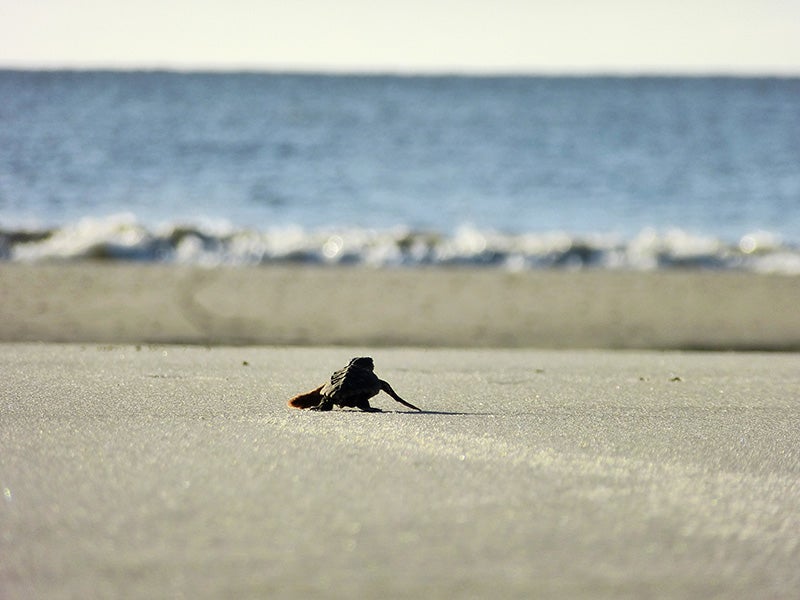Saving Sea Turtles From Oil Spills And Longline Fisheries
The loggerhead sea turtle has suffered more than a 40 percent decline in its population over the past decade.
Case Overview
Longline fishing in the Gulf of Mexico has taken a heavy toll on resident sea turtle populations. One species in particular—the loggerhead—has suffered more than a 40 percent decline in its population over the past decade. As a result, the Endangered Species Act requires the National Marine Fisheries Service to strictly limit the number of turtles that can be caught and harmed by these fishing vessels.
But NMFS has known for several years that longline vessels are catching Gulf turtles by the hundreds—levels that greatly exceed the allowed limit. The situation is so dire that in January 2009 the local fishery management council asked NMFS to close the fishery altogether. Even though the scientific data is clear, and despite the fact that NMFS has both the authority and duty to prevent further death and injury to sea turtles, the agency still failed to fulfill its legal responsibilities to protect sea turtles.
In 2009, Earthjustice asked a federal court in Florida to order NMFS to close the fishery until the agency gathered the information needed to assess how best to protect turtles. In 2010, the agency issued new regulations that weakened protection for sea turtles just as they became even more vulnerable due to the Deepwater Horizon oil spill. Even though it recognized the need to move hundreds of sea turtle nests away from the oil-affected Gulf beaches, NMFS failed to perform essential scientific consultation after the oil spill to ensure that vulnerable sea turtles receive protection needed to ensure their long-term survival and recovery.
To challenge NMFS’s ongoing failure to protect sea turtles, Earthjustice filed a second bottom longline lawsuit on behalf of a coalition of Gulf and national conservation groups. In July 2011, a federal judge ruled that NMFS had violated the Endangered Species Act and the National Environmental Policy Act. The agency must now take concrete steps to preserve the population of imperiled Gulf turtles.

Case Updates
Case page created on April 15, 2009.